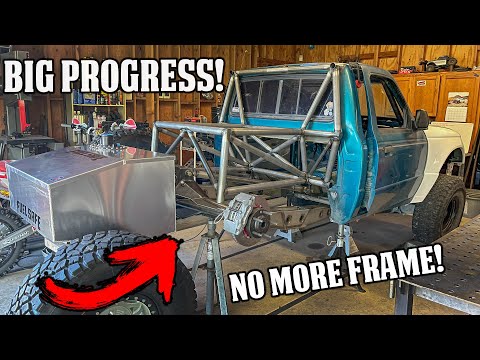Ranger Prerunner Part 2: Progress on Frame, Interior, and Structural Enhancements
The current update on the Ranger build highlights significant advancements made by Christian, who is meticulously working on this project alongside the truck’s owner, Ryan. The build is progressing from its initial stages where the factory frame rail was intact and the housing was merely placed under the truck. The team has since moved forward, focusing on getting the pivot boxes affixed and the lower links installed to begin assembling the structure upwards.
In the process of installing the pivot boxes, careful planning was necessary, especially when cutting the frame rail. Christian relied on precise measurements to ensure the cuts allowed for proper alignment and functionality. The pivot boxes, designed using Fusion 360 and crafted entirely in the garage, serve as a key foundation for the link geometry essential to the truck’s performance. The next steps involved setting the rear end position, constructing upper links, and establishing the alignment of various components to ensure optimal operation.
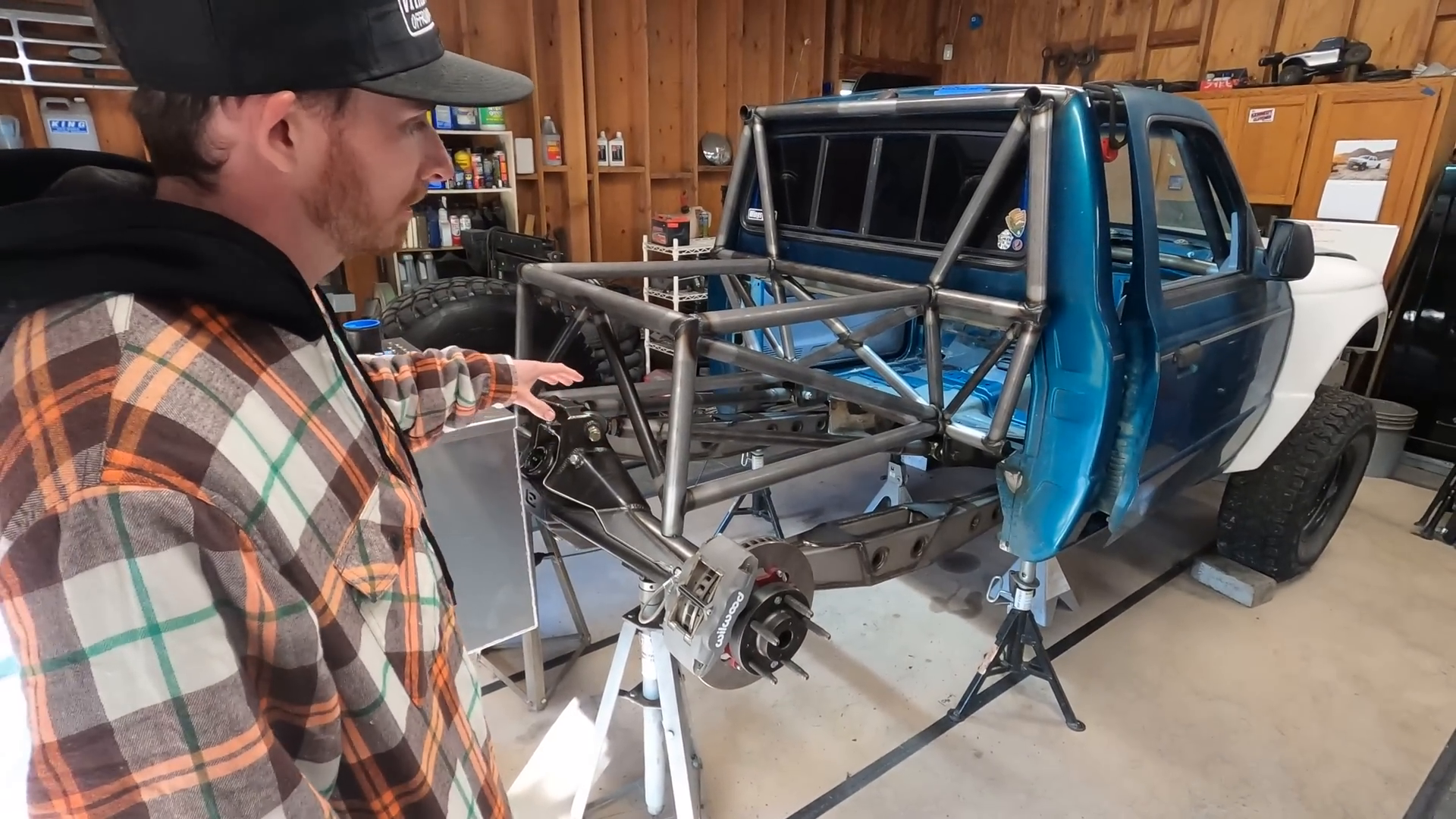
Interior Transformation and Cage Installation
Cage Design and Fabrication
The interior cage was the initial focus, setting the stage for further modifications. Christian prioritized installing the dash tube, which laid the groundwork for the rest of the cage. To maximize space, particularly in the tight confines of a regular cab Ranger, the cage was designed for a snug fit. This required careful execution, particularly with the two-inch main tubes, ensuring they were as close as possible to the cab’s sheet metal without compromising safety or comfort.
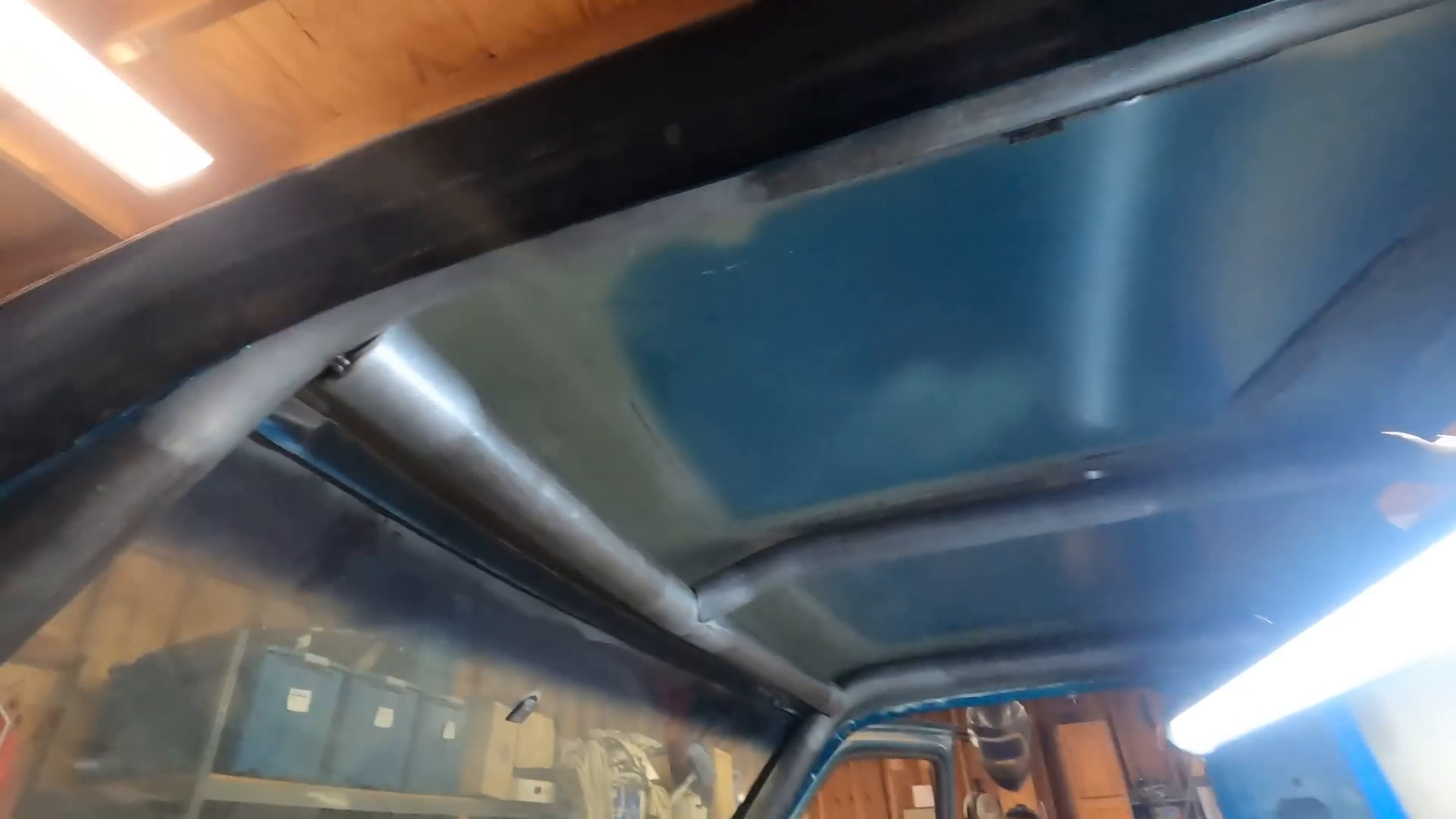
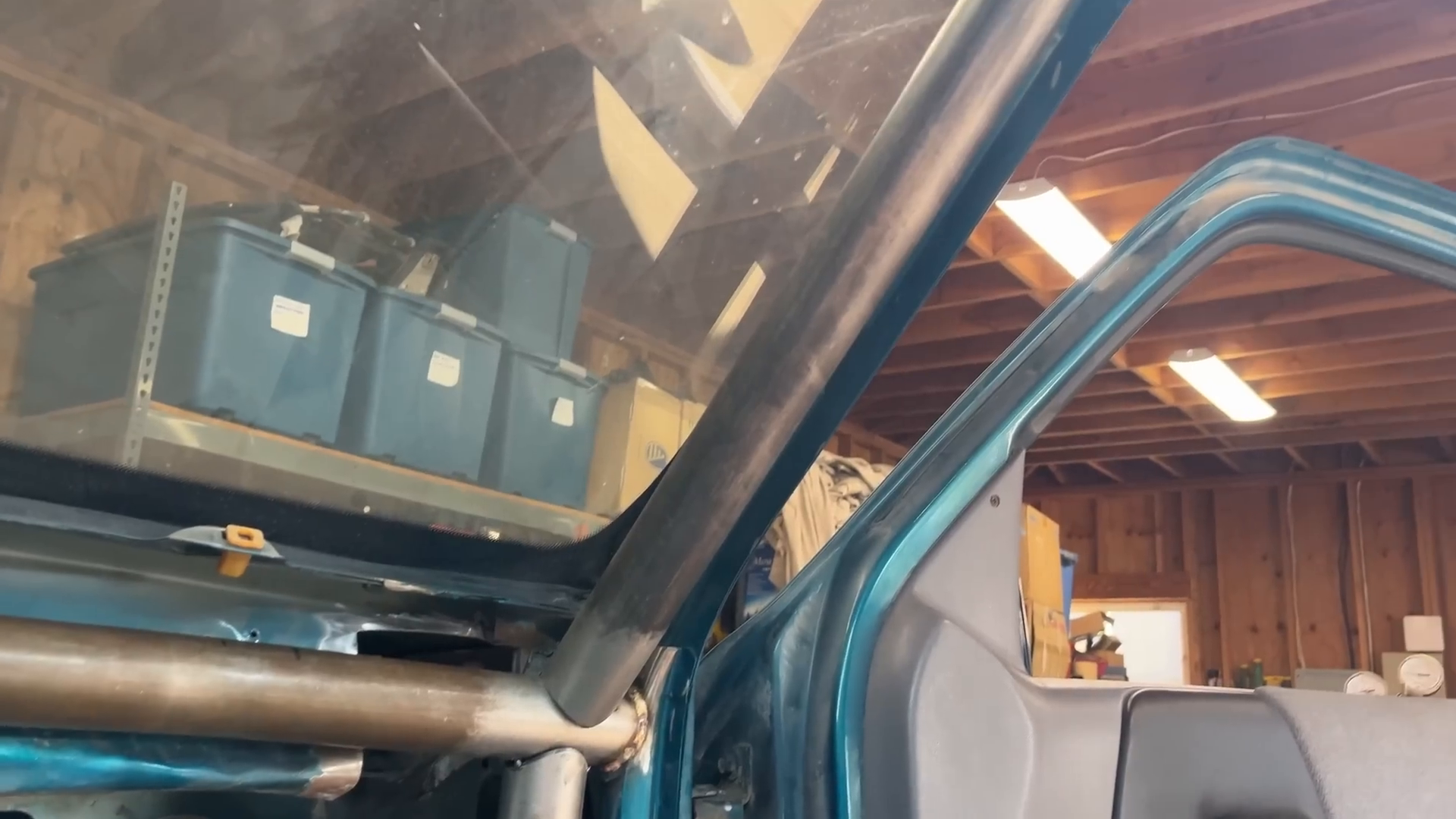
Ergonomics and Aesthetic Considerations
In designing the cage, Christian opted for an external B-pillar setup. This strategic decision was made to provide more interior space, especially in a regular cab where room is limited. By having the B-pillar externally, the interior space is maximized, offering greater comfort for the driver. The design choice not only enhances safety but also maintains a clean aesthetic, allowing for ample visibility through the back window.
Steering and Seating Adjustments
Steering Column Modification
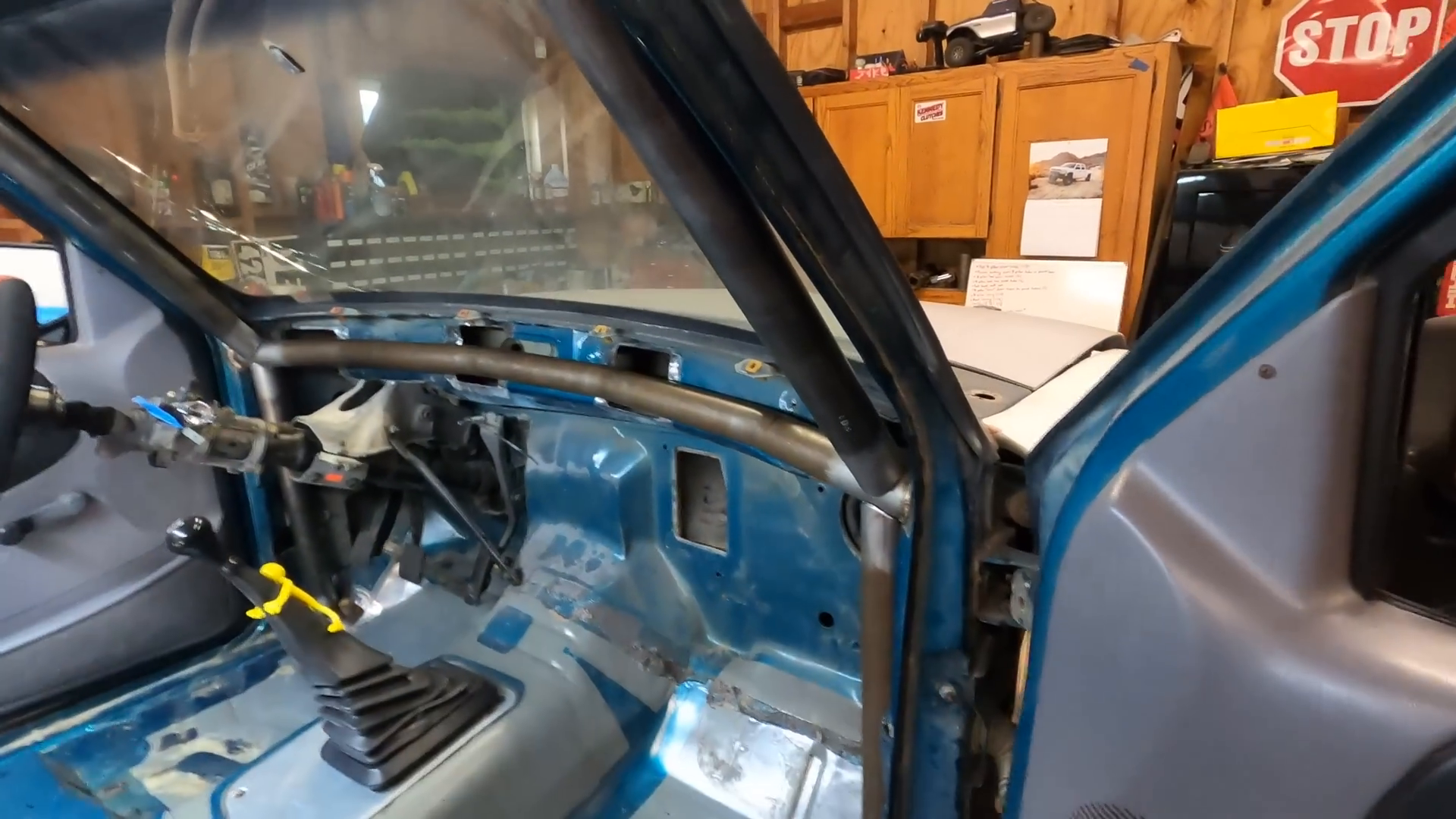
The team is considering changing the steering column to a shorter model with tilt functionality. The existing column is fixed and positions the steering wheel uncomfortably close to the driver. Switching to a compact, adjustable column will improve driver comfort and accessibility, especially as the seating position is adjusted for maximum comfort and control.
Seat Selection and Installation
The seats, a critical component for both comfort and safety, were carefully chosen. PRP Deltas were selected for their size compatibility with the Ranger’s cabin and their comfortable design. The seats include features such as a durable shell and removable cushions for easy cleaning, which is advantageous for off-road environments where dust and debris are common. The choice of material and color complements the truck’s overall design, offering both functionality and aesthetic appeal.
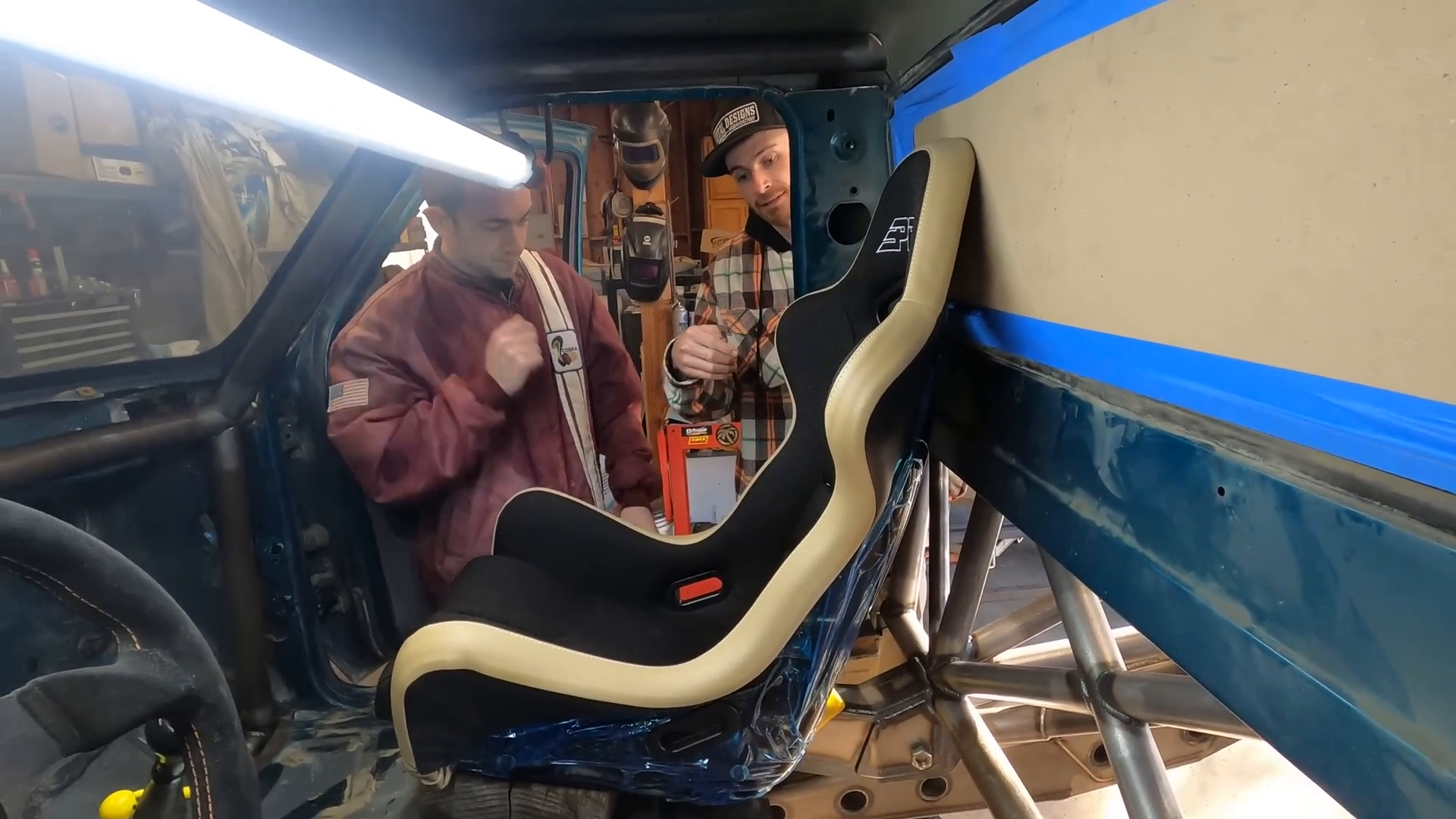
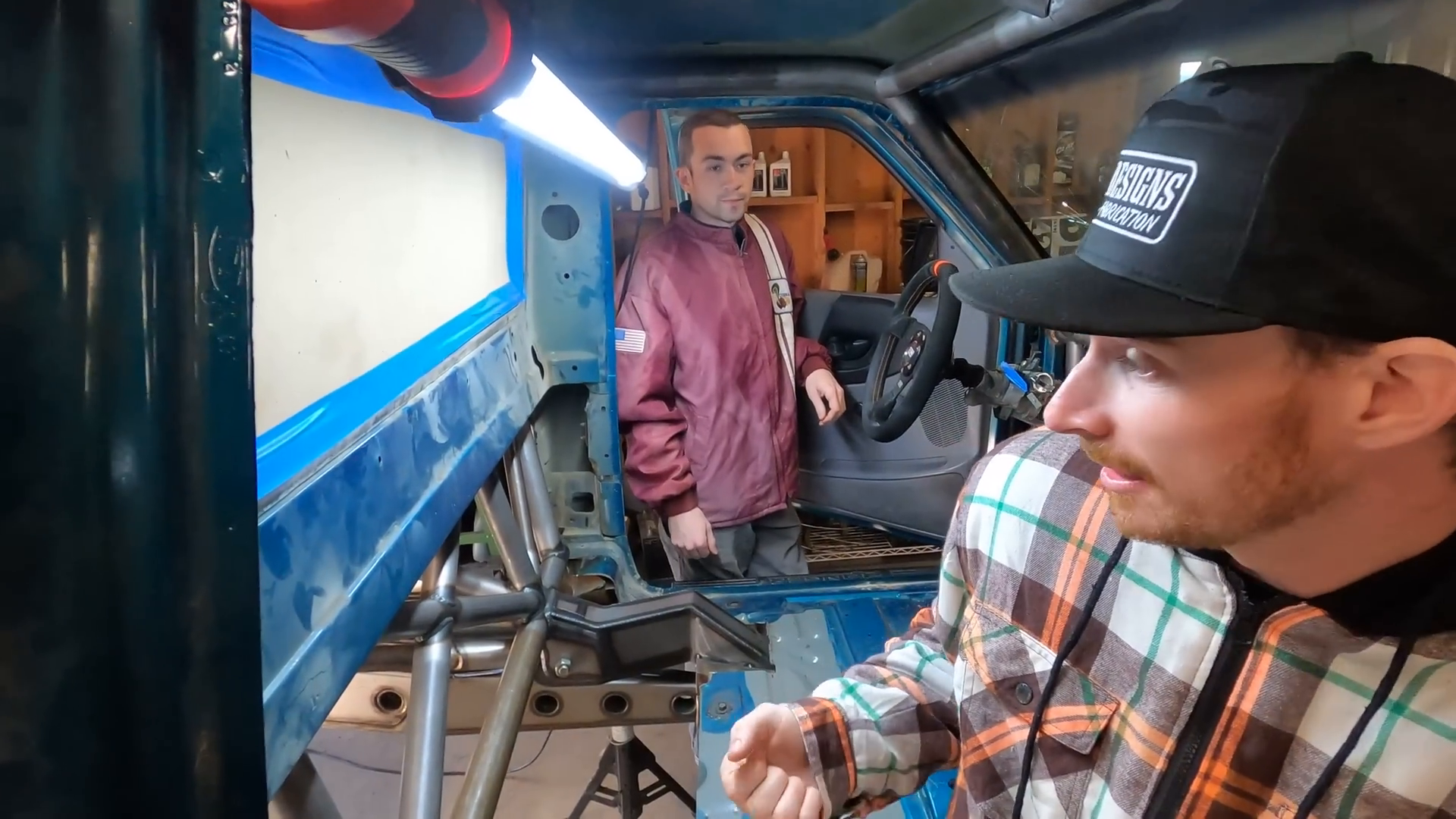
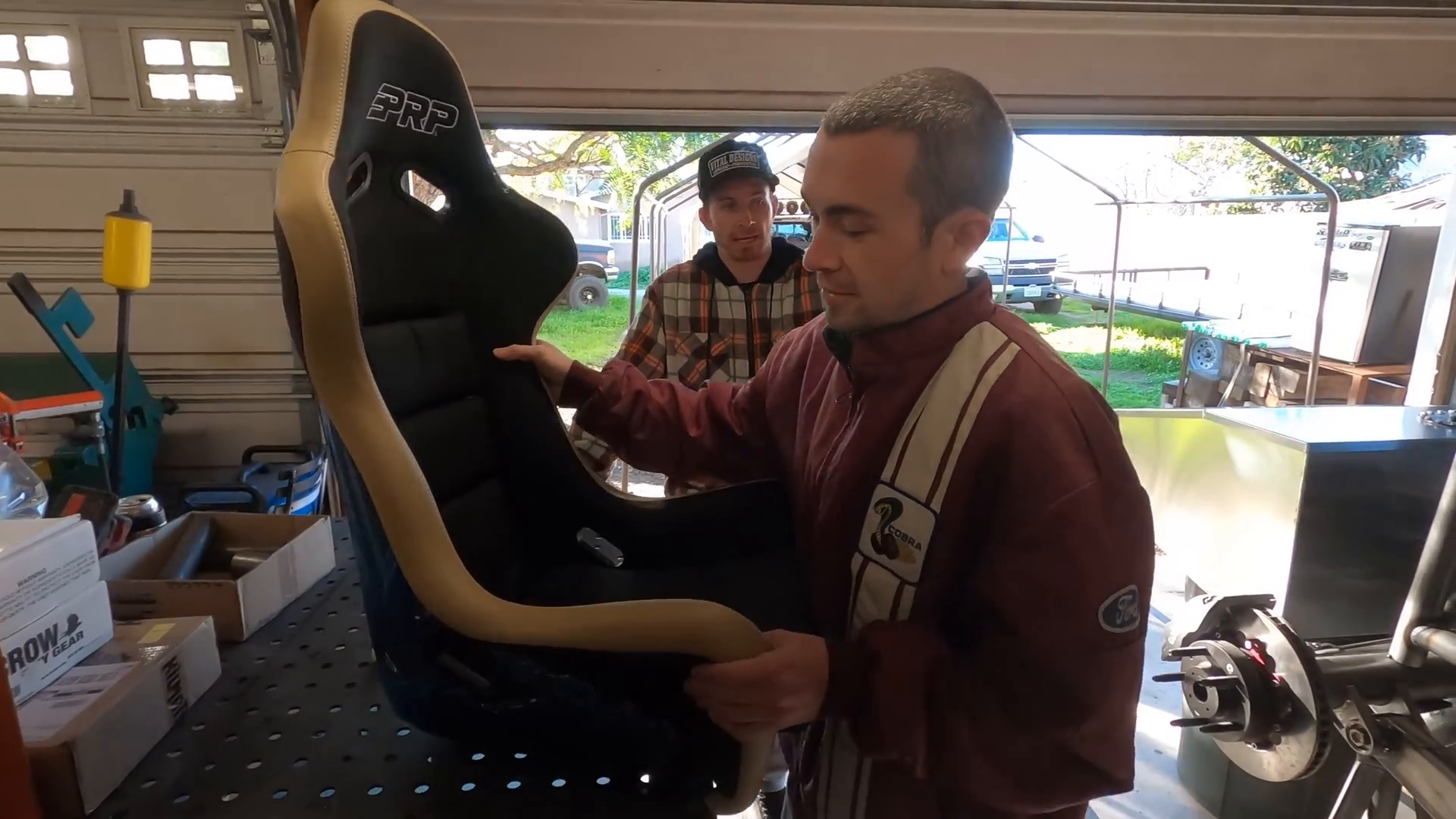
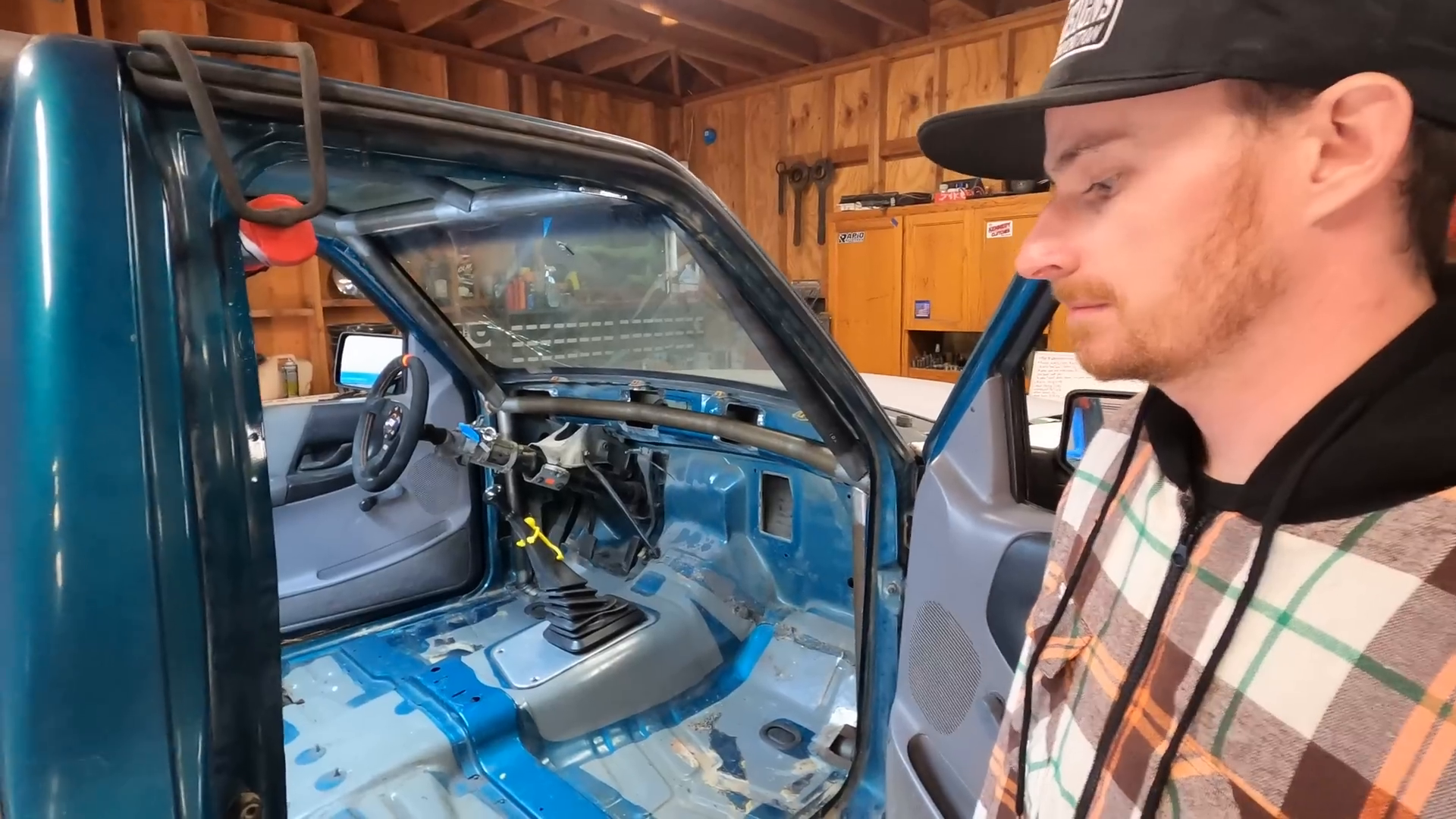
Rear Framework and Structural Enhancements
Rear Cage Design
The rear cage design is integral to the truck’s stability and performance, particularly in off-road conditions. The setup involves strategic placement of tubes to accommodate the fuel cell and provide a robust foundation for the suspension system. The rear section’s structure is wider at the cage, tapering inward toward the cab to house the fuel cell securely while allowing for future modifications.
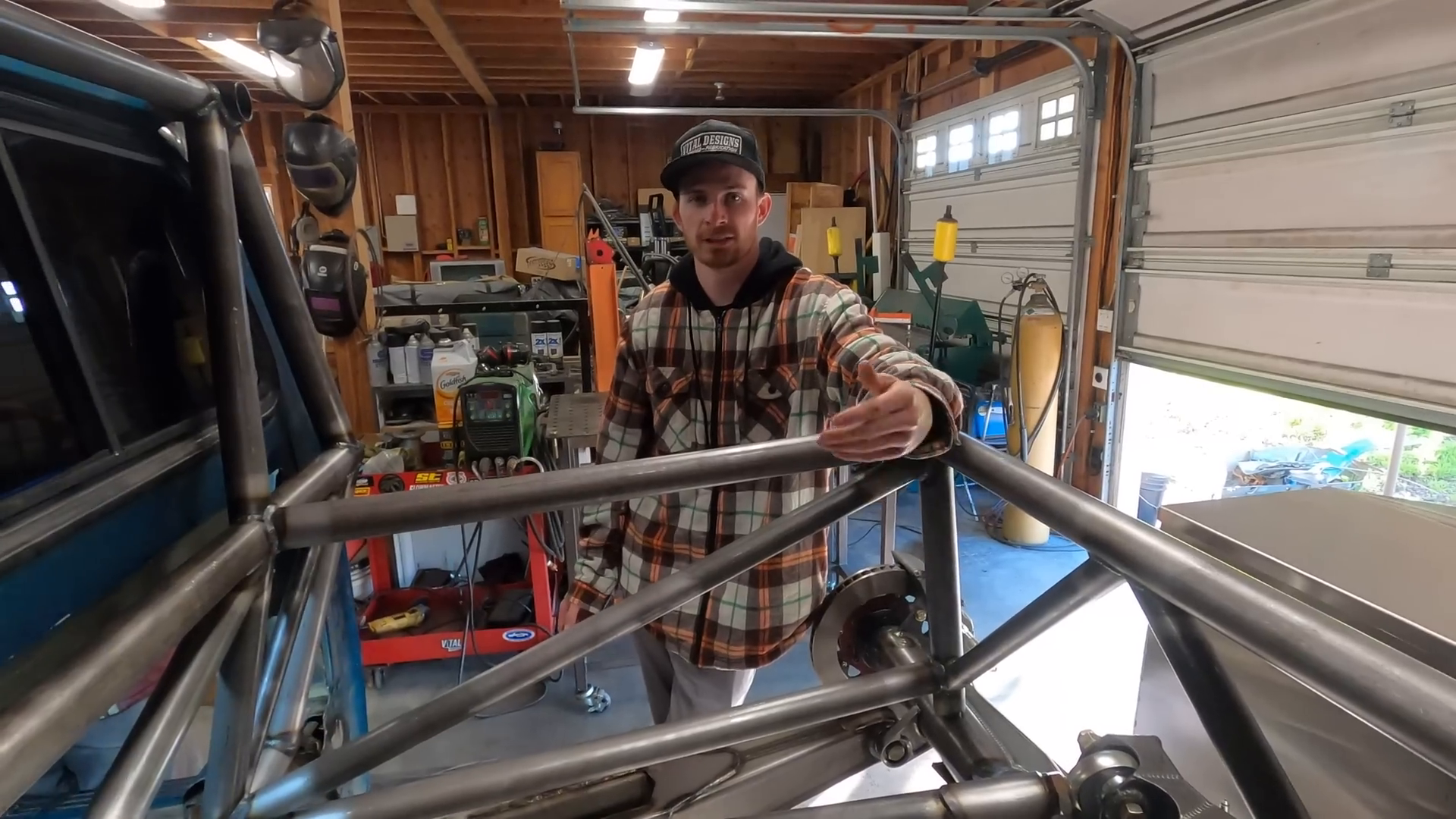
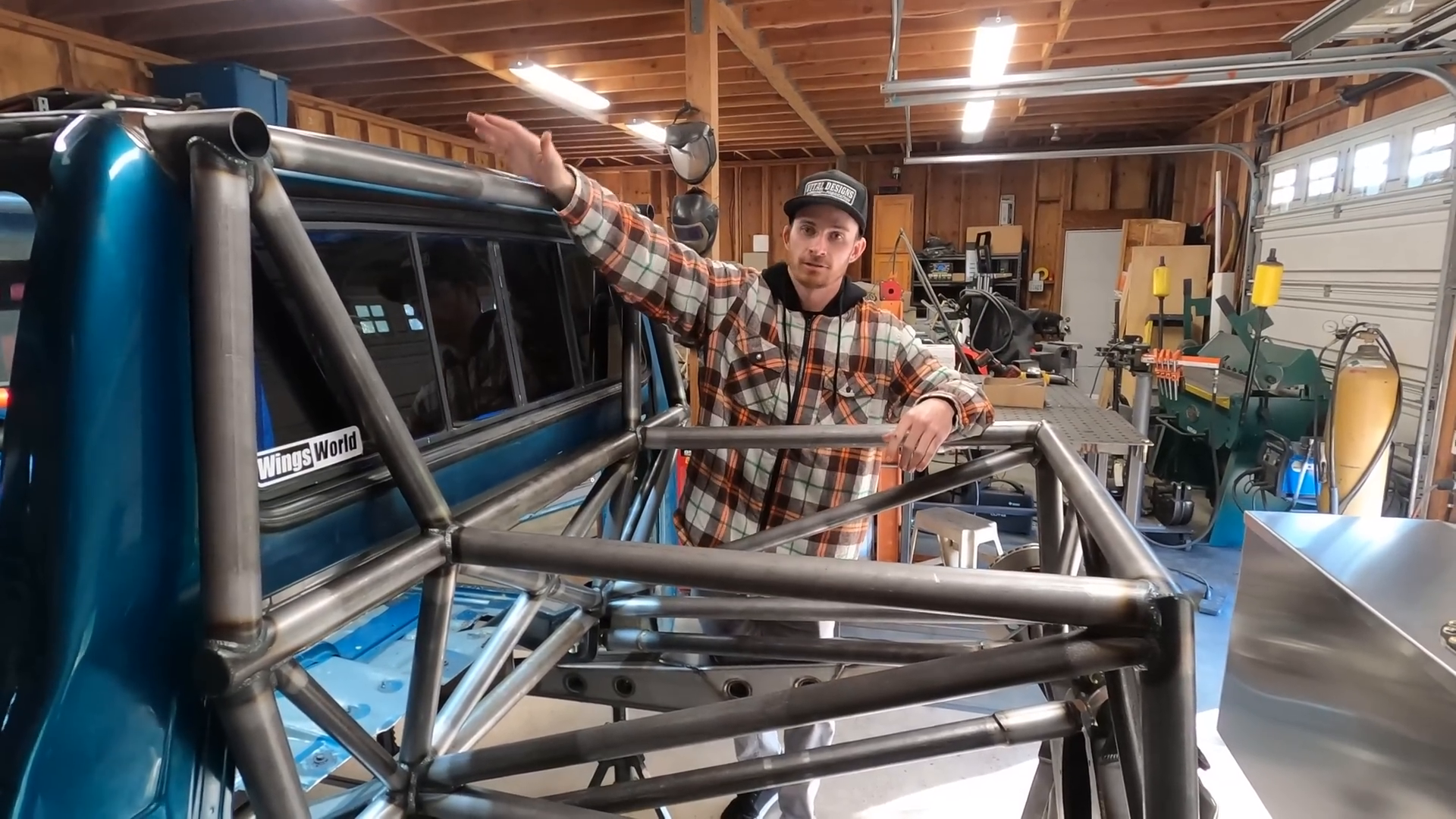
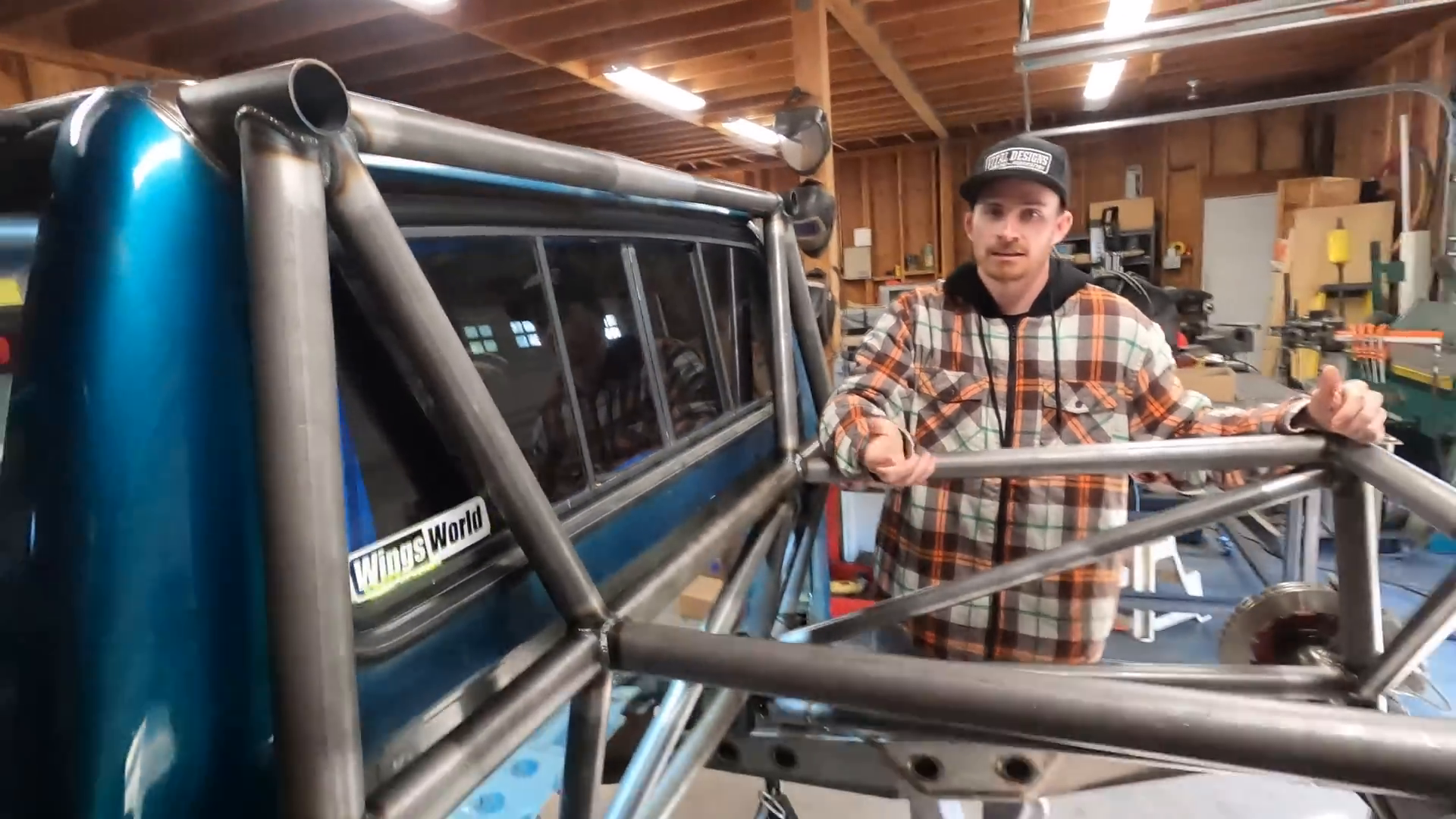
Shock Mounts and Travel Considerations
Incorporating shock mounts and ensuring adequate axle travel are critical to the Ranger’s off-road capabilities. The design allows for 14 inches of upward travel from ride height, with considerations for future upgrades to larger tires. This flexibility ensures the truck can handle more challenging terrains while maintaining a stable and reliable performance.
Future Directions and Considerations
Looking ahead, the build continues with a focus on optimizing the truck’s performance and durability. While significant progress has been made, further work will involve finalizing the cage structure, adding necessary reinforcement, and integrating additional components such as a custom dash and external accessories. The project exemplifies the complexity and creativity involved in automotive customization, requiring a balance of technical skill, aesthetic sensibility, and practical application. As the build progresses, each decision made by the team reflects a commitment to excellence and innovation in transforming the Ranger into a superior off-road vehicle.
Overall, the Ranger build is a testament to the dedication and expertise of the team involved. With each phase of the project carefully executed, the final product promises to be a unique blend of form and functionality, ready to take on any off-road challenge with confidence and style.
Categorized in: DIY, Fabrication, Ford, Trucks
